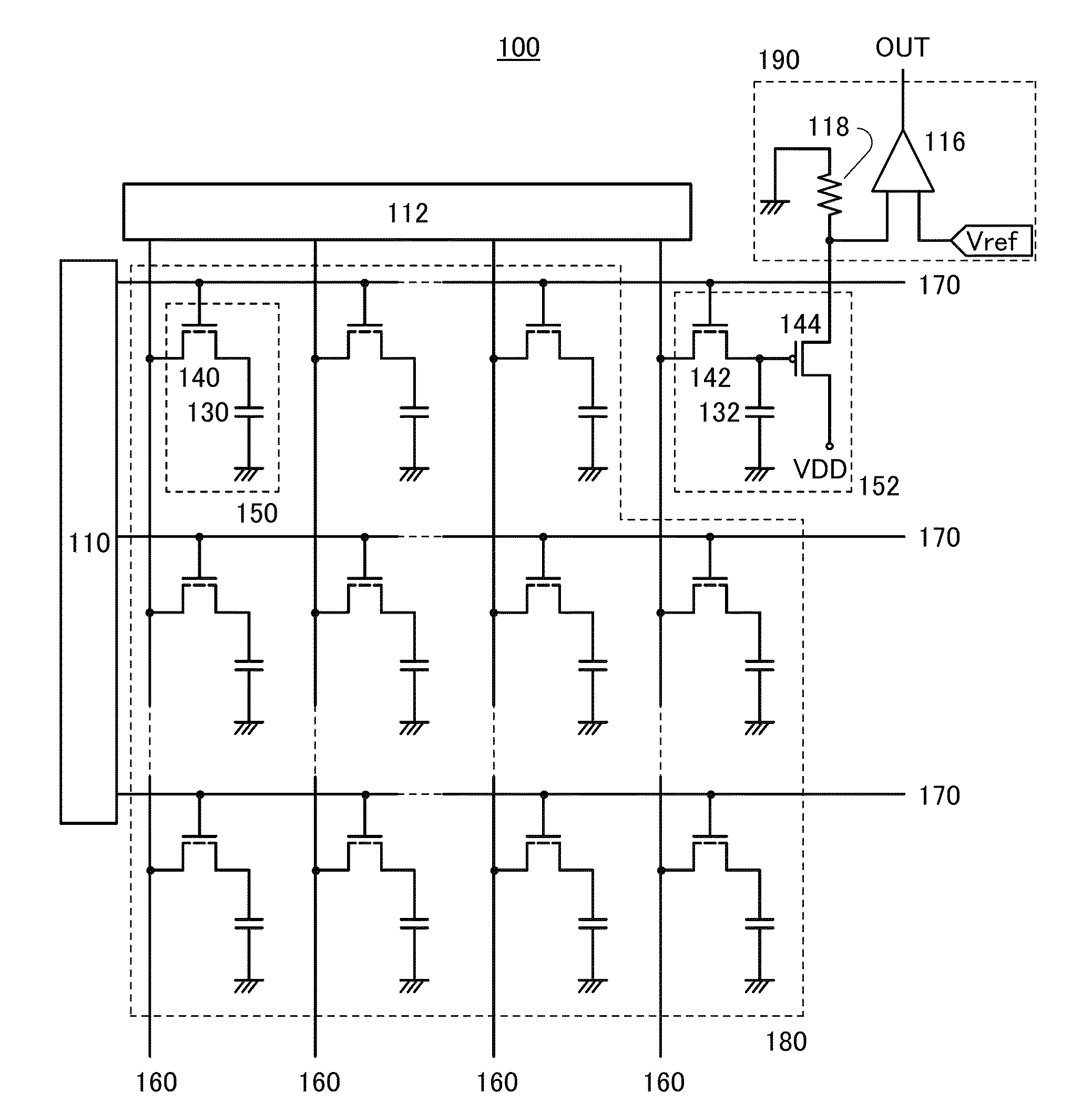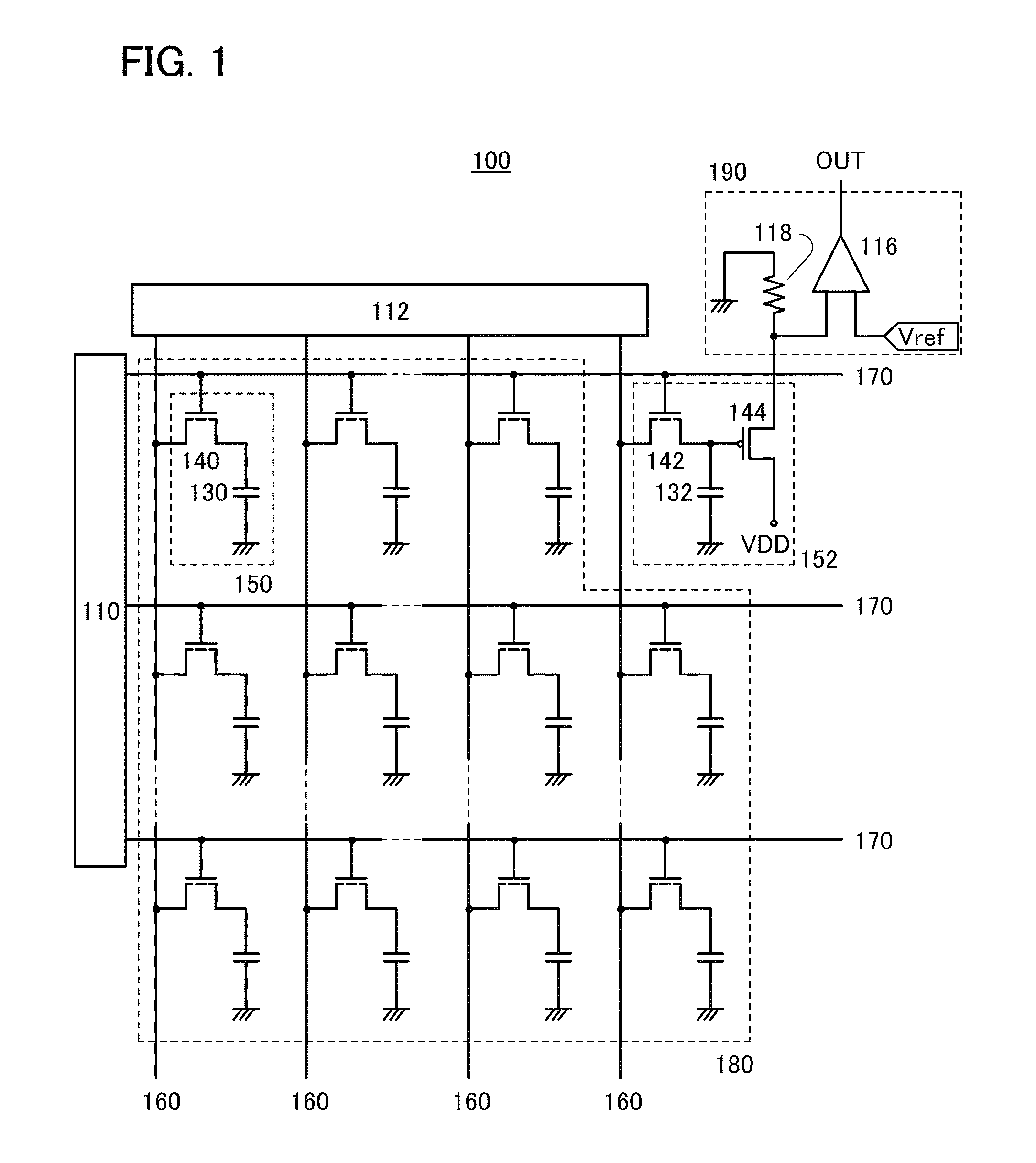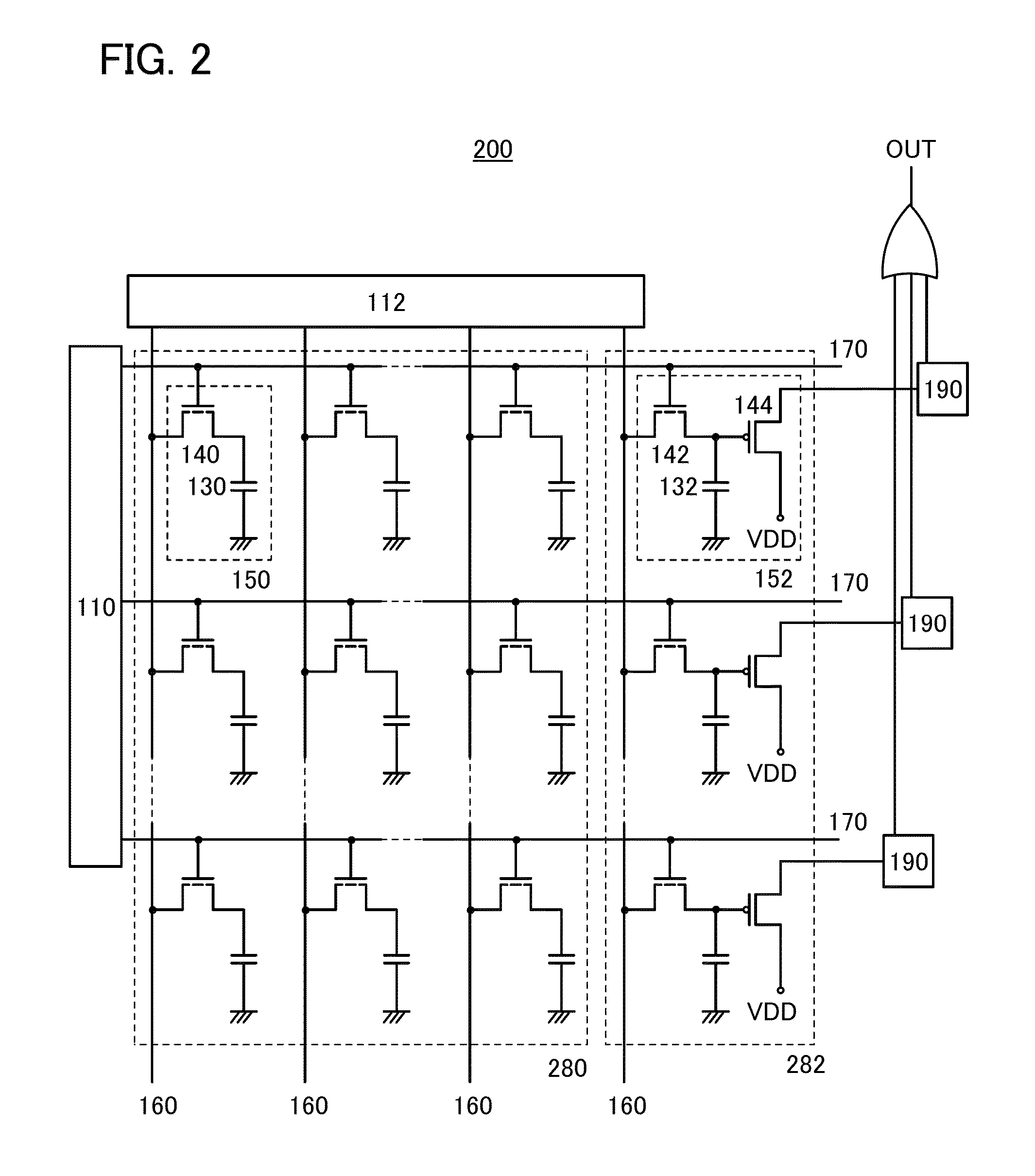Semiconductor device and driving method thereof
a technology of semiconductor devices and driving methods, applied in semiconductor devices, digital storage, instruments, etc., can solve problems such as significant problems, deterioration of transistors, and large power consumption, and achieve the effects of suppressing oxide semiconductor carrier generation, reducing impurities and oxygen vacancy, and reducing oxygen vacancy
- Summary
- Abstract
- Description
- Claims
- Application Information
AI Technical Summary
Benefits of technology
Problems solved by technology
Method used
Image
Examples
embodiment 1
[0059]In this embodiment, a semiconductor memory device according to one embodiment of the present invention will be described.
[0060]FIG. 1 is a circuit diagram of a memory module 100 which is a semiconductor memory device.
[0061]The memory module 100 includes a memory cell array 180 including a plurality of memory cells 150 arranged in matrix, a refresh timing detection circuit including a reference cell 152 and a comparison circuit 190, a row decoder 110, a column decoder 112, bit lines 160, and word lines 170.
[0062]The memory cell 150 includes a first transistor 140 using an oxide semiconductor and a first capacitor 130. With the use of an oxide semiconductor, the off-state current of the first transistor 140 can be reduced.
[0063]In this specification, in order to distinguish a transistor formed using an oxide semiconductor from the other transistors, a signal shown as the first transistor 140 in FIG. 1 and the like is used as a transistor using an oxide semiconductor.
[0064]The re...
embodiment 2
[0223]In this embodiment, a memory module 200 which has a different structure from that of the memory module 100 described in Embodiment 1 will be described with reference to FIG. 2.
[0224]The memory module 200 is different from the memory module 100 in that it includes a reference cell group 282 including a plurality of reference cells 152.
[0225]Further, since the plurality of reference cells 152 is included, a memory cell array 280 has a storage capacity little smaller than that of the memory cell array 180.
[0226]Each of the plurality of reference cells 152 included in the reference cell group 282 may be connected to the bit line 160 in the same column, but the present invention is not limited thereto. For example, the different reference cells 152 may be connected to the bit lines 160 in different columns. Further, the reference cells 152 are not necessarily close to each other.
[0227]In the reference cell group 282, when the drain current flows from each of the reference cells 152...
embodiment 3
[0230]In this embodiment, a memory module 300 having a structure different from those of the memory module 100 and the memory module 200 described in Embodiment 1 and Embodiment 2 will be described with reference to FIG. 3.
[0231]The memory module 300 is different from the memory module 100 and the memory module 200 in that the third transistor 144 is not included in a reference cell 352 corresponding to the reference cell 152.
[0232]Therefore, in the comparator 116, Vref and the potential of the second capacitor 132 are compared. That is, when the potential of the second capacitor 132 is gradually decreased and becomes lower than Vref, the refresh operation may be performed to the memory cell array 180 and the reference cell 352.
[0233]This embodiment has a structure in which the third transistor 144 is not provided, whereby the structure is simplified for easy manufacture.
[0234]On the other hand, in order to detect the timing of the refresh operation accurately, the capacitance of th...
PUM
 Login to View More
Login to View More Abstract
Description
Claims
Application Information
 Login to View More
Login to View More - R&D
- Intellectual Property
- Life Sciences
- Materials
- Tech Scout
- Unparalleled Data Quality
- Higher Quality Content
- 60% Fewer Hallucinations
Browse by: Latest US Patents, China's latest patents, Technical Efficacy Thesaurus, Application Domain, Technology Topic, Popular Technical Reports.
© 2025 PatSnap. All rights reserved.Legal|Privacy policy|Modern Slavery Act Transparency Statement|Sitemap|About US| Contact US: help@patsnap.com



